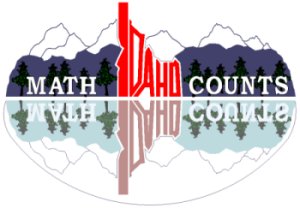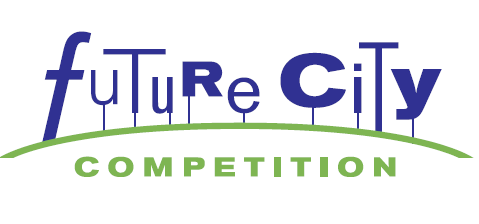|












| |
Idaho Society of Professional Engineers
Friday Update – 01/11/08
UPCOMING EVENTS:
 | January 12, 2008 –
Idaho Regional Future City
Competition - Boise |
 | January 18, 2008 -
ISPE Magic Valley Chapter Meeting
- 12:00 – 1:00 PM – Riedesel Engineering, Inc, 202 Falls Avenue, Twin Falls |
 | January 22, 2008 -
ISPE Southwest Chapter Noon Meeting -
Washington Group International - Training Room, Boise |
 | February 2, 2008 -
ISPE Northern Chapter
MATHCOUNTS Competition, Lewiston |
 | February 5, 2008 -
ISPE Magic Valley Chapter
MATHCOUNTS Competition, Twin Falls |
 | February 9, 2008 - ISPE
Southeast Chapter MATHCOUNTS Competition - Pocatello |
 |
February 9, 2008 -
ISPE Southwest Chapter MATHCOUNTS Competition,
Boise
|
 |
February 12, 2008 -
ISPE Northern Chapter
MATHCOUNTS Competition, Coeur d'Alene
|
 |
February
17 – 23, 2008 –
National Engineers Week |
 | February 21, 2008 – ISPE Southwest Chapter EWeek
Luncheon – Doubletree Riverside, Boise |
 | March 8, 2008 -
State MATHCOUNTS Competition,
Boise
|
 | May 9, 2008 -
National
MATHCOUNTS Competition - Denver, CO
|
 | June 6, 2008 - ISPE
2008 Annual Meeting - Red Lion Hotel Boise Downtowner, Boise
|
VOLUNTEERS NEEDED!
Volunteers from all engineering disciplines are
needed to interview Boise State Students for the 2008 Outstanding Engineering
Student Awards. Volunteers will make the selection of the outstanding student in
each of the three disciplines (CE, ME, and EE) at Boise State. The time
commitment will be one evening for approximately 3 hours at the end of January
or early February. The interviews will take place at Boise State University. All
student nominees will be honored at the Engineers Week Banquet on February 21.
If you would like to volunteer please e-mail Heather Carroll at
hcarroll@dohertyeng.com.
MATHCOUNTS VOLUNTEERS NEEDED
The ISPE Northern Chapter is currently in
need of volunteers to help with this year’s MATHCOUNTS competition. The
competition will be held on February 12th at NIC. Help will be needed beginning
at 8 am on the 12th.
If you are interested in volunteering or have any questions please contact Terry
Harwood at taharwood@imbris.com
IDAHO PE REVIEW SPRING 2008
Presented by
University of Idaho College of Engineering, Boise
The University of Idaho College of Engineering once again presents the PE
Review for Civil and Mechanical Engineers.
Dates: January 22 through April 8, 2008
Times: Tuesday Evenings from 6pm-9pm
Disciplines: Civil and Mechanical
Engineering
Cost: $600 per person
To Register: Contact Paula Peterman at
364-6188 or paulap@uidaho.edu
ISPE SINCERELY APPRECIATES THE SUPPORT OF ALL OF OUR
CURRENT SUSTAINING
ORGANIZATIONS:
AHJ Engineers, PC
B & A Engineers, Inc
Briggs Engineering Inc
Delta Engineering Group
Elkhorn Engineers
G & S Structural Engineers
J.M. Miller Engineering, Inc
J-U-B Engineers, Inc
Kittelson & Associates Inc
Land Solutions, Land Surveying & Consulting
Mason & Stanfield, Inc
Materials Testing & Inspection
MWH
Progressive Engineering Group, Inc
Quadrant Consulting, Inc
Rational Technology of Idaho, LLC
Riedesel Engineering, Inc
Schiess & Associates
Stapley Engineering
Terracon
TerraGraphics Environmental Engineering, Inc
Walker Engineering
Please consider joining these great companies in
becoming an
ISPE Sustaining Organization. ISPE offers the Sustaining
Organization category of membership to enhance the visibility of your commitment
to ISPE and the engineering profession. Your membership will allow us to better
serve the engineering community through promoting engineering and ethics, and
supporting the needs of the engineer including professional development.
If you are interested in becoming a
Sustaining Organization, please
contact the ISPE office at
ispe@idahospe.org.

MATHCOUNTS PROBLEM OF THE WEEK
Can you solve this MATHCOUNTS problem? The answer will appear in next
week's edition of the Friday Update!
Elections
Elections – With the start of 2008 comes a rash of caucuses and primaries to
determine who each party will choose to run in the national presidential
election. In light of this, here are a few questions surrounding voting,
percentages, etc.
On January 3rd, both the democratic and republican parties in Iowa saw a record
number of voters turn out for the caucus. In 2004, the Democratic Party had
124,000 at the caucus. This year, the Democratic Party had a turn out of 227,000
voters. By what percent did this year’s democratic voter participation beat 2004
democratic voter participation? Express your answer to the nearest tenth.
--------------------------------------------------------------------------------
In Mr. Hoolihan’s 8th grade Social Studies class, students are holding
mock-elections to learn about our nation’s voting process. In this class
exercise, only Vonda, Emma, Frank, and Bobby are running for the class
republican bid for president. During the “primary vote” Vonda received 10% of
the votes, Emma received 35% of the votes, Frank received 30% of the votes, and
Bobby received the rest of the votes. If Bobby received 10 votes, what was the
difference between the least number of votes received and the greatest number of
votes received by the four candidates?
--------------------------------------------------------------------------------
After the “primary vote,” Vonda dropped out of the race. If Vonda had dropped
out before the “primary vote,” what is the minimum percentage of Vonda’s votes
that Frank would have had to receive in order to beat Emma in the primary vote?
Answer to last week’s MATHCOUNTS problem:
The coins come from 50 different years. Since there are 100,000,000 coins, there
are 2,000,000 coins from each year. (100,000,000 ÷ 50 = 2,000,000)
Coins from 1958 through 1981 have a mass of 3.1 grams each, so there are
48,000,000 coins with a mass of 3.1 grams each. (2,000,000 coins × 24 years =
48,000,000)
Coins from 1982 through 2007 have a mass of 2.5 grams each, so there are
52,000,000 coins with a mass of 2.5 grams each. (2,000,000 × 26 years =
52,000,000)
(48,000,000 coins)(3.1 grams) + (52,000,000 coins) (2.5 grams) = 278,800,000
grams
--------------------------------------------------------------------------------
First we need to figure out how many bags there were and to do that we need to
know how many grams each bag weighed.
(30lbs/bag)(453.59grams/lb) = 13,607.7 grams/bag
278,800,000 grams ÷ 13,607.7 grams/bag = 20,488.40 bags
Now we divide the total number of bags by the number of people pouring.
20,488.40 ÷ 100 = 205 bags per person, to the nearest whole number.
--------------------------------------------------------------------------------
First we need to find the volume of each penny.
V = πr2h
r = d d
r =
 (0.75)
= 0.375 (0.75)
= 0.375
V = π(0.375)2(0.061)
V = 0.0269489745 cubic
inches per penny
Next multiply the volume of one penny by the
total number of pennies.
(0.0269489745)(100,000,000) = 2694897.45 cubic inches
Convert the volume to cubic feet.
(2694897.45 in3) ÷ (1728 in3/ft3) = 1559.5471 ft3
Now we can solve for the height that the melted penny mixture would reach.
V = l×w×h
1559.5471 = 30×165×h
1559.5471 = 4950×h
h = 0.32 ft, to the nearest hundredth
--------------------------------------------------------------------------------
First divide the number of pennies by the number of pennies sucked up per
minute.
100,000,000 pennies ÷ ($1000 × 100 pennies per dollar) = 1000 minutes
Now convert minutes into hours.
(1000 minutes) ÷ (60 minutes per hour) = hours
If you want to see last week's problem again, click
http://www.mathcounts.org/webarticles/anmviewer.asp?a=1137&z=110
Idaho Society of Professional Engineers
PO Box 170239
Boise, ID 83717-0239
208-426-0636
Fax: 208-426-0639
E-Mail: ispe@idahospe.org
Web Site: www.Idahospe.org
| |

ISPE
MATHCOUNTS
Program

National Engineers Week - Future City Competition

Board of Professional Engineers and
Professional Land Surveyors
--News
Bulletins
--Meeting
Minutes


|
 Idaho
Society of Professional Engineers
Idaho
Society of Professional Engineers